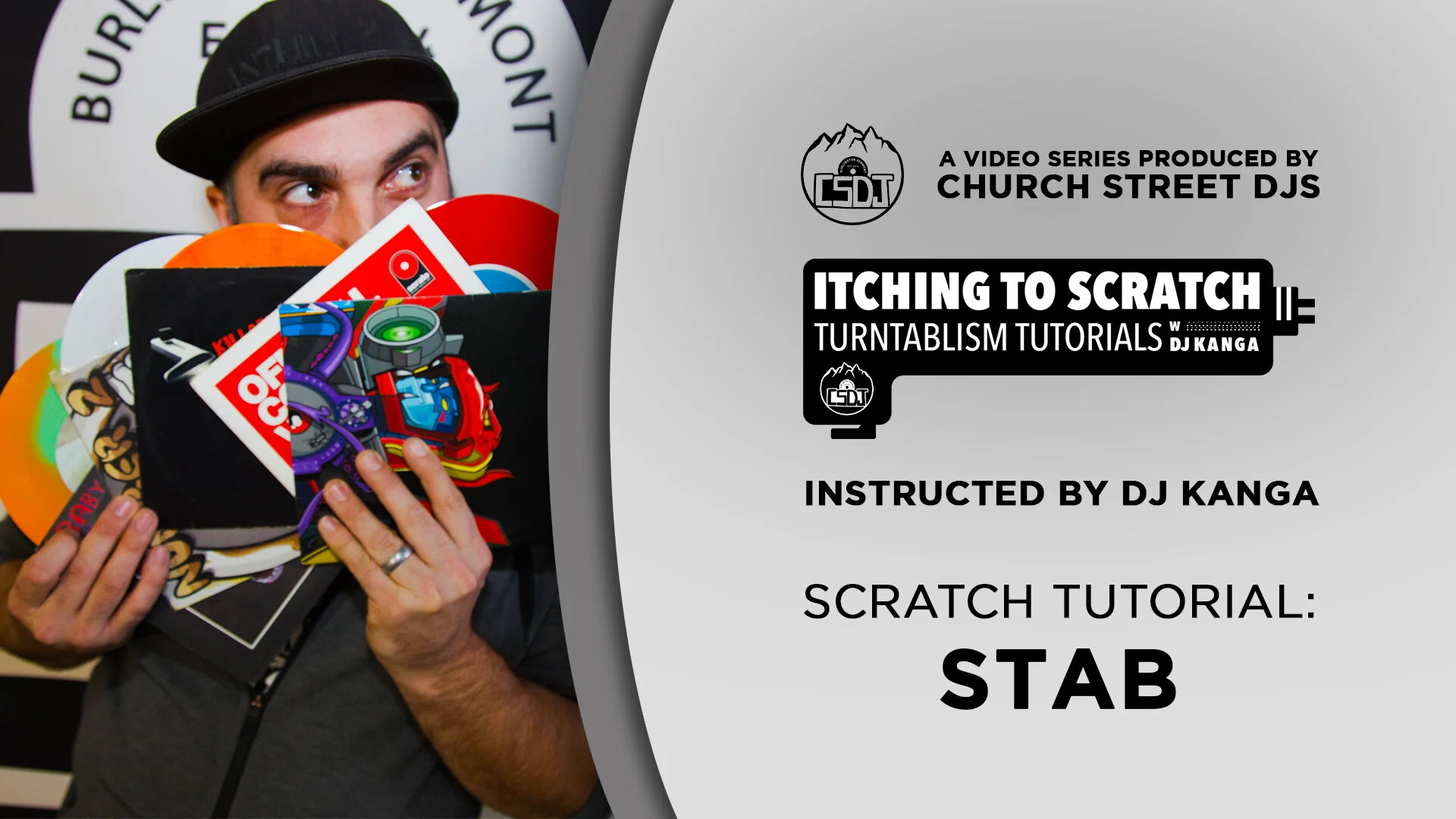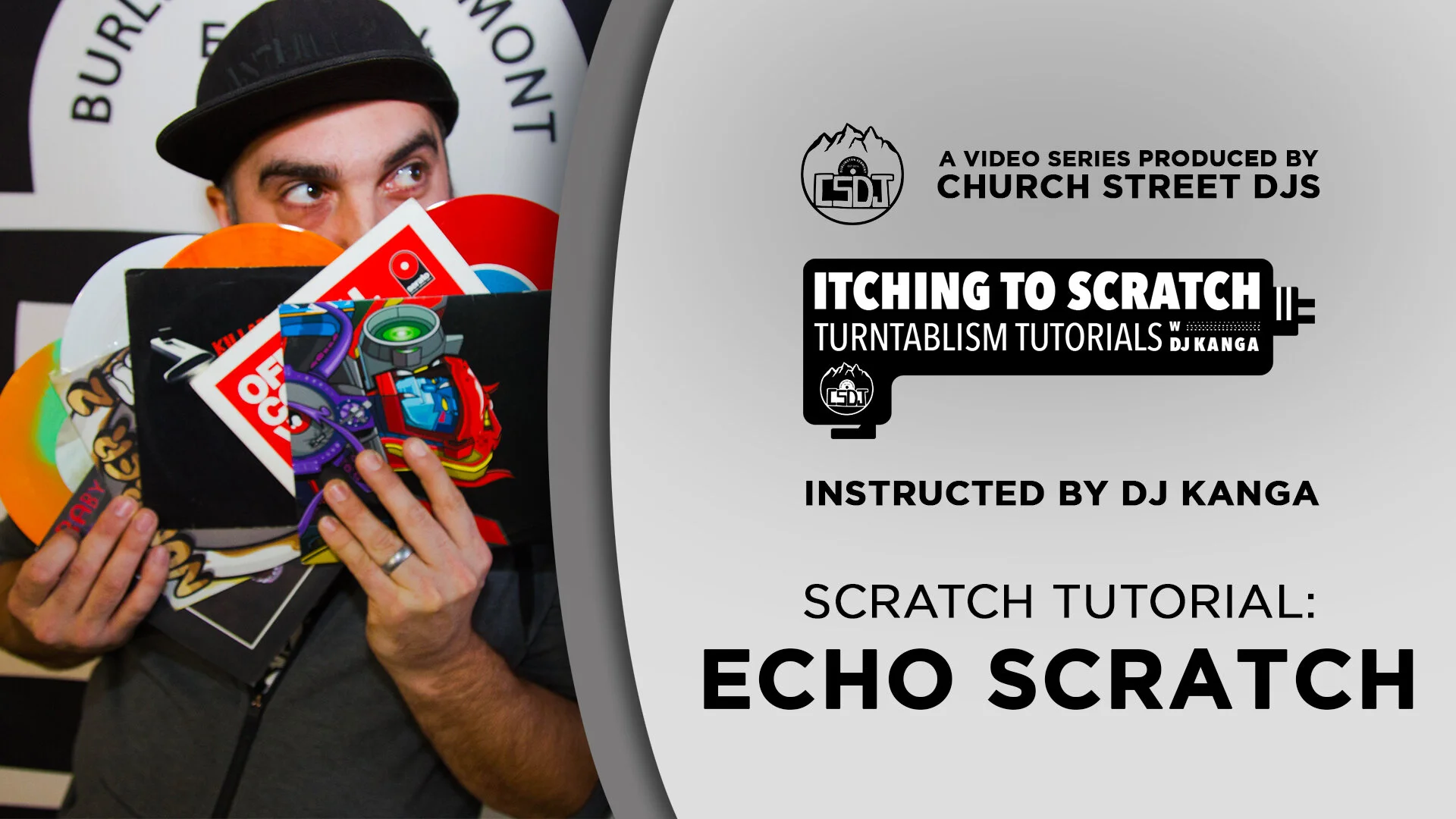Our first preset pattern with the crossfader. Start with the crossfader closed and the record at the beginning of a sound sample. As you release the record, move the crossfader towards the middle of its track. As the sound finishes, close the crossfader and then pull the record back to the beginning of the sound. The goal is to only hear the sound playing forward, “Fresh”. You don’t want to hear any of the back cut “Hserf”. Start with whole notes (4 beats long), work to half notes (2 beats) and then quarter notes (1 beat). If you’re feeling up to the challenge try in 1/8th and 1/16th notes. At this speed it helps to always have your hand on the record instead of releasing the record.
Week 18: Stab
Week 19: Fade
The fade scratch can be great for intros/outros as well as adding space/variation between faster more complicated techniques. While doing babies/rubs, slowly move the channel/volume fader down and then back up again, fading the scratch in and out. Try consistent babies/rubs at first but then also try fading any scratch like lasers, tears, scribbles, drags, etc.
Week 20: Echo
Similar to the Fade Scratch, the Echo technique uses the channel/volume fader but its movements are more like the forward scratch. The crossfader should always remain on and start with the record at the beginning of a sound. Release the record and as it gets to the end of the sound, turn the channel/volume fader all the way down. While the volume fader is down, bring the record back to the beginning of the sound. When you release the record, move the crossfader back up but don’t go all the way. If you started with fader all the way up at “10” on the next scratch only bring the fader up to ~“7”. On each repetition bring the volume fader lower and lower until it reaches zero. The goal is to only hear the sound playing forward and on each forward decreasing the volume to achieve the way an echo would sound in a large room. This can then also be done the opposite way, starting from zero and working up, to echo the scratch back in.





